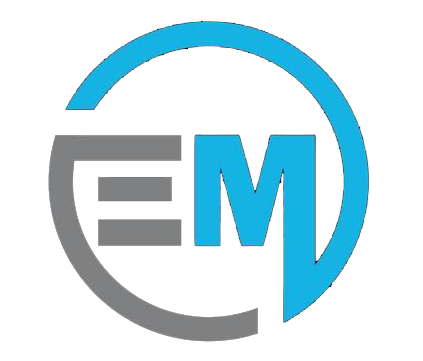How to Apply for Federal and State Tax Credits for Sustainable Living in 2024
Introduction
Sustainable living is more than just a trend—it’s a necessity as we tackle climate change and strive for a greener future. In 2024, governments are doubling down on their efforts to promote sustainability by offering various tax credits to homeowners, businesses, and individuals. These credits help offset the costs of eco-friendly upgrades, making it easier for you to adopt green practices while saving money.
If you’ve been thinking about installing solar panels, upgrading your home’s insulation, or buying an electric vehicle, tax credits can be a game-changer. In this guide, we’ll explore everything you need to know about applying for federal and state tax credits for sustainable living in 2024. Let’s dive in!
Understanding Federal Tax Credits for Sustainable Living
What Are Federal Tax Credits?
Federal tax credits are incentives provided by the U.S. government to encourage taxpayers to adopt environmentally friendly practices. Unlike deductions, which reduce your taxable income, tax credits directly reduce the amount of taxes you owe—essentially putting money back into your pocket.
For sustainable living, federal tax credits focus on energy efficiency, renewable energy adoption, and eco-friendly transportation. These programs aim to make green investments affordable for everyone.
Key Federal Programs Supporting Sustainable Living
Here are some of the top federal programs available in 2024:
The Energy Efficient Home Improvement Credit: This credit covers upgrades such as better insulation, energy-efficient windows, and doors.
Residential Clean Energy Credit: A credit designed for homeowners installing renewable energy systems like solar panels or wind turbines.
Electric Vehicle (EV) Tax Credit: If you’re purchasing an electric car in 2024, this credit can significantly reduce your costs.
Each of these programs has its own eligibility requirements and benefits, which we’ll explore later.
Exploring State-Specific Tax Credits
State-Level Initiatives Overview
State tax credits are an essential complement to federal programs. These credits vary widely depending on where you live, but they often focus on renewable energy installations, sustainable agriculture, and electric vehicle adoption. Some states even offer rebates alongside credits, doubling your savings potential.
Examples of Popular State Tax Credit Programs
California Solar Tax Credits: California leads the charge with generous incentives for solar panel installations.
New York Clean Heating Credits: This program rewards homeowners for adopting energy-efficient heating systems like heat pumps.
Florida Renewable Energy Tax Incentives: Sunshine State residents can claim credits for solar installations and other renewable energy projects.
Eligibility Requirements for Federal and State Tax Credits
General Eligibility Criteria
To qualify for tax credits, you need to meet basic eligibility criteria such as:
Owning or renting a property where the improvements are made.
Making upgrades within the designated tax year (2024).
Ensuring projects meet energy efficiency or renewable energy standards.
Federal Eligibility Guidelines
For federal programs, requirements often include specific efficiency certifications and proper documentation, such as contractor invoices and product labels.
State-Specific Requirements
State-level programs can have unique conditions, such as stricter timelines or caps on the maximum credit amount. Check your state’s tax authority website for details.
Step-by-Step Process for Claiming Federal Tax Credits
Step 1: Identify Eligible Projects
Start by determining which upgrades or purchases qualify for federal tax credits. Common projects include installing solar panels, improving home insulation, and purchasing ENERGY STAR-certified appliances.
Step 2: Gather Necessary Documentation
Ensure you have receipts, certificates, and contractor invoices. Documentation is crucial to prove your project meets all requirements.
Step 3: File the Correct IRS Forms
For most residential energy projects, you’ll need IRS Form 5695. This form helps you calculate your credit and includes instructions on where to file it.
Step 4: Track Your Claim
Federal tax credits can take a few months to process. Make sure to track your claim and follow up if necessary.
How to Apply for State Tax Credits
Research Your State’s Programs
Each state has its own set of incentives for sustainable projects. Visit your state’s tax department website or consult local environmental agencies for a list of available credits.
Application Process and Deadlines
Many states allow online applications for tax credits. Be mindful of submission deadlines to avoid missing out.
Tracking and Receiving State Tax Credits
Once you apply, monitor your claim status. Most states issue credits within a few months, but processing times vary.
Combining Federal and State Tax Credits
Maximizing Savings
One of the best strategies is to combine federal and state tax credits. For example, you might save thousands by pairing federal solar incentives with state-level rebates.
Examples of Combined Benefits
Imagine installing a $20,000 solar system in California. Federal credits cover 30%, while state incentives provide another 10%, leaving you with just 60% of the original cost.
Common Mistakes to Avoid
Missing Deadlines: Late applications can disqualify you.
Incorrect Documentation: Ensure all receipts and forms are complete and accurate.
Not Checking Compatibility with State Laws: Some projects might qualify federally but not at the state level.
Benefits of Utilizing Tax Credits for Sustainable Living
Financial Savings
Tax credits can drastically lower your upfront costs for sustainable upgrades.
Environmental Impact
Every green improvement helps reduce carbon footprints and fight climate change.
Increased Property Value
Eco-friendly homes often sell for higher prices.
Expert Tips for a Smooth Application Process
Use tools like tax credit calculators to estimate savings.
Consult tax professionals to avoid errors.
Join community programs for additional resources and guidance.
Conclusion
Tax credits make sustainable living not just affordable but also incredibly rewarding. By combining federal and state incentives, you can significantly reduce your costs while contributing to a greener future. Don’t wait—start planning your sustainable projects today.
FAQs
What is the maximum amount I can claim for federal tax credits in 2024?
Federal caps vary by program. For instance, solar credits offer up to 30% of the project cost.
Can I claim credits for a rental property?
Some federal and state credits apply to rental properties; check program specifics.
Are there tax credits for installing energy storage systems?
Yes, federal credits now include energy storage systems like solar batteries.
What happens if I don’t have enough tax liability to use my credits?
Unused credits can often roll over to the next tax year.
How do I find a reliable contractor for my sustainable upgrades?
Look for certified professionals with experience in energy-efficient installations.


